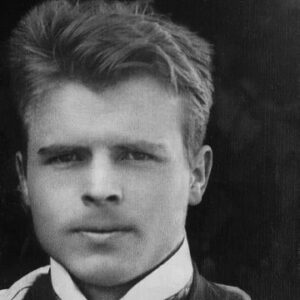Hermann Rorschach, a Swiss psychiatrist, is most known for devising the Rorschach Inkblot test, a projective test. He created a ten-card deck of inkblot cards that were supposed to disclose a subject’s hidden personality qualities. In truth, the inkblot tests were his only contribution to the area of psychiatry, but the widespread acceptance of this personality diagnostic instrument was enough to gain him worldwide acclaim. Rorschach, the son of an art teacher, had always been interested in drawing and painting since he was a child. Klecksography, the technique of creating imaginative inkblot images, captivated him. He became known as ‘Klecks’ because he loved making inkblots so much that he made them his life’s job. He was passionate about both art and science and wanted to pursue a career in one of them. He went to medical school and went on to become a renowned psychiatrist. His obsession with art and inkblots persisted, and he began developing a set of inkblot tests to help psychiatrists comprehend the subconscious aspects of patients’ personalities. These exams are now employed not only in psychiatry but also in a variety of other fields such as military training, career counseling, and so on.
Childhood and Adolescence
Ulrich Rorschach, an art teacher at a small Zurich school, was his father. He was the oldest of three brothers and sisters. His father admired his son’s interest in the arts and encouraged him to use his imagination.
From a young age, he was fascinated by klecksography, the art of creating inkblot designs. His obsession with inkblots earned him the nickname ‘Klecks’ from his buddies.
He and his siblings grew up in a stimulating intellectual and artistic atmosphere. His joyful family life, however, was cut short when his mother died when he was only 12 years old and his father died seven years later.
Despite the problems at home, he graduated from high school with honors only a year after his father died.
In 1904, he enrolled in Zurich’s Academie de Neuchatel to study botany and geology. He moved to medical school at the University of Berne in Switzerland after a single term there. He was a psychology specialist who completed his studies in Zurich, Nuremberg, and Berlin.
In Zurich, he studied under Eugene Bleuler, a talented psychiatrist who had also trained Carl Jung. At the time, psychoanalysis was a hot topic in the field of psychiatry, which reignited his interest in inkblots.
He started by exhibiting inkblots to schoolchildren and observing their reactions. He was perplexed as to why various people interpreted the same sight differently.
He began researching inkblots in 1911, though it would be several years before they became popular. He’d already carried out some preliminary tests on schoolchildren and reviewed the inkblot experiments of other psychologists.
In 1909, he completed a residency in a mental facility in Munsterlingen, and in 1912, he graduated from the University of Zurich with a doctorate in medicine.
Career
In 1914, he obtained work as a resident physician at the Waldau Mental Hospital in Berne, Switzerland, after working for a year at a mental institute in Russia. He was transferred to the Krombach Mental Hospital in Appenzell after a few years.
During the 1910s, he focused on developing a method for employing inkblots to methodically analyze the mentality of participants, both psychiatric patients and healthy subjects, in order to uncover their latent personality features.
He rose to become one of the foremost psychiatrists of his day as a result of his hard work and dedication. In 1919, he was elected to the Swiss Psychoanalytic Society’s vice presidency.
He created a ten-card deck, each with a unique inkblot pattern incorporating shapes that resemble tangible objects. The participants were asked to describe what they noticed in the abstract inkblot design. In 1921, he published his findings in a monograph titled ‘Psychodiagnostik.’
Other psychiatrists at the time did not think his work was very important because it was widely believed that personality could not be examined or assessed.
By 1922, his work had gained a following, and he began to improvise on the inkblot cards. Unfortunately, he died of an illness the next year, so he never got to see the results of his experiments in the decades to come.
Major Projects
His inkblot examinations, known as Rorschach Tests, are his primary contribution to the discipline of psychiatry. He devised them to comprehend his subjects’ latent psychological qualities. Despite the fact that there are some critics of the tests, inkblot tests are still a common way of personality profiling.
Personal History and Legacy
He married Olga Stempelin, a Russian girl who worked in a mental facility in Switzerland. After thereafter, the couple relocated to Russia, where they had two children.
In 1922, he died of peritonitis. He was only 37 years old at the time.
Estimated Net Worth
The estimated net worth of Hermann Rorschach is unknown.
Trivia
He was a contemporary of Carl Jung, the prominent psychologist.


